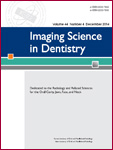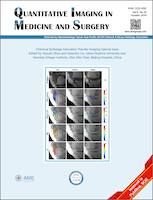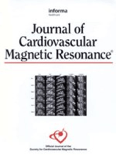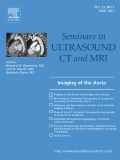
MAGNETIC RESONANCE IMAGING
Scope & Guideline
Fostering Innovation in Biomedical Engineering and Imaging
Introduction
Aims and Scopes
- Clinical Applications of MRI:
The journal emphasizes the practical applications of MRI in clinical settings, such as diagnosis and treatment monitoring of various conditions including cancer, neurological disorders, and cardiovascular diseases. - Innovative Imaging Techniques:
Exploration of cutting-edge MRI techniques, including but not limited to diffusion-weighted imaging, dynamic contrast-enhanced imaging, and advanced spectroscopy, to enhance diagnostic accuracy and treatment planning. - Radiomics and Machine Learning:
A significant focus on the integration of radiomics and machine learning in MRI, highlighting how these technologies can improve diagnostic outcomes and personalize treatment. - Quantitative MRI and Biomarkers:
Research on quantitative MRI methods aimed at establishing biomarkers for various diseases, facilitating earlier detection and better monitoring of disease progression. - MRI Safety and Protocol Development:
Investigating the safety aspects of MRI, including protocols for imaging patients with implants and other safety considerations, ensuring best practices are followed in clinical environments.
Trending and Emerging
- AI and Deep Learning in MRI:
There is a growing trend towards the use of artificial intelligence and deep learning algorithms for image analysis, diagnosis, and prediction, significantly enhancing the capabilities of MRI. - Integration of MRI with Other Modalities:
Research focusing on the combination of MRI with other imaging techniques, such as PET and CT, is on the rise, reflecting a trend towards multimodal imaging approaches for comprehensive diagnostics. - Patient-Centric MRI Innovations:
Emerging studies are increasingly focusing on patient comfort and safety, including the development of noise-reduced MRI protocols and adaptations for vulnerable populations such as children and elderly patients. - Functional and Quantitative Imaging Advances:
There is a heightened interest in functional imaging techniques and quantitative assessments, particularly in areas like perfusion imaging and metabolic imaging, which are critical for evaluating treatment responses. - Application of Radiomics in Oncology:
Radiomics is increasingly being used in oncology research to extract quantitative features from MRI images, helping in prognostic modeling and treatment response evaluation.
Declining or Waning
- Basic Research in MRI Physics:
There has been a noticeable decline in publications centered on foundational MRI physics, likely due to the increasing focus on clinical applications and technological advancements. - Historical Perspectives on MRI:
Fewer articles are dedicated to historical reviews or comparisons of older MRI techniques, as the field moves towards more contemporary applications and innovations. - Non-Magnetic Resonance Imaging Modalities:
Research that compares MRI with other imaging modalities such as CT or ultrasound has decreased, suggesting a more MRI-centric focus in recent studies. - Lower Emphasis on Conventional MRI Techniques:
As new imaging techniques and technologies emerge, conventional MRI methods are receiving less attention, with a shift towards studies that explore advanced imaging methodologies.
Similar Journals

Imaging Science in Dentistry
Innovating the landscape of dental imaging and diagnostics.Imaging Science in Dentistry is a premier open-access journal published by the Korean Academy of Oral & Maxillofacial Radiology, dedicated to the cutting-edge field of dental imaging and radiology. Since its inception in 2011, the journal has played a pivotal role in disseminating crucial research that advances our understanding of imaging techniques in dentistry, imaging-based diagnostics, and treatment planning. With an impressive Q2 ranking in various fields, including Dentistry (Miscellaneous), Radiological and Ultrasound Technology, and Radiology, Nuclear Medicine, and Imaging as of 2023, it is recognized for its contribution to the academic community, attracting a diverse readership that encompasses researchers, clinicians, and students. The journal provides a platform for sharing innovative methodologies, clinical studies, and reviews that shape current practices in dental imaging while promoting open access to enhance knowledge sharing globally. Through its rigorous peer-review process and commitment to high-quality publications, Imaging Science in Dentistry continues to set a standard for excellence in imaging sciences in the dental profession.

JACC-Cardiovascular Imaging
Leading the Way in Cardiovascular Imaging AdvancementsJACC-Cardiovascular Imaging, published by Elsevier Science Inc, is a premier journal that focuses on the rapidly evolving field of cardiovascular imaging, providing a vital platform for the dissemination of high-quality research and clinical studies. With an impressive impact factor and ranking within the top tier of cardiology and radiology specialties, the journal is recognized for its commitment to advancing knowledge in diagnostic imaging techniques, including echocardiography, MRI, and CT in cardiovascular contexts. Since its inception in 2008 and converging through 2024, JACC-Cardiovascular Imaging has maintained a distinguished position, currently ranking Q1 both in Cardiology and Cardiovascular Medicine as well as in Radiology, Nuclear Medicine and Imaging. This ensures its relevance and influence, as evidenced by its Scopus rankings—ranked #2 in Radiology and #8 in Cardiology, placing it in the top echelons of scholarly output. Although it does not offer open access, the journal's content is crucial for researchers, clinicians, and students who seek to remain at the forefront of cardiovascular imaging advancements.

Quantitative Imaging in Medicine and Surgery
Innovative Insights in Quantitative Medical ImagingQuantitative Imaging in Medicine and Surgery is an esteemed journal dedicated to advancing the field of medical imaging through rigorous research and innovative methodologies. Published by AME PUBLISHING COMPANY in China, this journal has established itself with an impressive Q2 quartile ranking in the field of Radiology, Nuclear Medicine, and Imaging, reflecting its dedication to high-quality research. With a comprehensive focus on quantitative imaging techniques, the journal covers a wide range of topics including image analysis, imaging biomarkers, and the integration of imaging in clinical practice, promoting collaboration between imaging specialists and clinicians. As an open access journal, Quantitative Imaging in Medicine and Surgery ensures that its articles are freely accessible, facilitating the dissemination of knowledge to a broader audience. With a commitment to fostering innovation in imaging science, this journal serves as an invaluable resource for researchers, professionals, and students alike, ultimately aiming to improve patient outcomes through advanced imaging strategies and technologies.

JOURNAL OF CARDIOVASCULAR MAGNETIC RESONANCE
Advancing cardiovascular imaging through innovative magnetic resonance insights.JOURNAL OF CARDIOVASCULAR MAGNETIC RESONANCE (ISSN: 1097-6647, E-ISSN: 1532-429X) is a premier open access journal published by Elsevier Science Inc in the United Kingdom, dedicated to advancing the field of cardiovascular imaging through magnetic resonance technology. Since its inception in 1999, the journal has established a robust reputation, evidenced by its ranking in the Q1 category across various fields including Cardiology and Cardiovascular Medicine, Family Practice, and Radiology, Nuclear Medicine and Imaging, as reported in its 2023 assessments. With a strong emphasis on high-quality research and innovations, this journal serves as a vital resource for researchers, clinicians, and students alike, providing vital insights that influence clinical practice and enhance patient care. Its rigorous peer-review process ensures that all contributing authors publish influential studies that are widely disseminated within the academic community. Researchers can access the journal freely since it has been an open access platform since 2008, promoting a wider reach and engagement within the cardiovascular imaging arena.

SEMINARS IN ULTRASOUND CT AND MRI
Unlocking the Future of Radiology and ImagingSEMINARS IN ULTRASOUND CT AND MRI is a prestigious academic journal dedicated to advancing the fields of radiology, nuclear medicine, and imaging. Published by W B SAUNDERS CO-ELSEVIER INC, this journal has been a cornerstone of scholarly communication since 1984, providing a platform for high-quality research and review articles that enhance the understanding of diagnostic imaging techniques. With a current impact factor reflected in its Q3 quartile ranking among 333 journals in its category, it remains a valuable resource for researchers and clinicians alike. The journal's focus includes but is not limited to innovations in ultrasound, computed tomography, and magnetic resonance imaging, making it essential for professionals looking to stay at the forefront of imaging science. While it operates under a subscription model, its extensive archive of influential articles ensures ongoing access to critical knowledge and developments in the field. With a commitment to quality and relevance, SEMINARS IN ULTRASOUND CT AND MRI continues to contribute significantly to the evolving landscape of medical imaging.

Imaging
Exploring the Future of Radiology and UltrasoundImaging, published by AKADEMIAI KIADO ZRT, is an esteemed open-access journal dedicated to the field of medical imaging, established in 2020. With an E-ISSN of 2732-0960 and based in Budapest, Hungary, this journal provides a vital platform for the dissemination of cutting-edge research and advancements in imaging techniques, especially in the realms of radiology, nuclear medicine, and ultrasound technology. While currently positioned in the Q4 category across multiple medical specialties, the journal continues to strive for improvements in visibility and impact, contributing to the evolving discourse in medical imaging. The journal aims to facilitate an inclusive and collaborative environment for researchers, professionals, and students, inviting them to share their findings and insights to enhance the field's development. With open-access availability since its inception, Imaging ensures free and easy access to its content, fostering a greater understanding and appreciation of innovative imaging practices worldwide.

Journal of the Korean Magnetics Society
Elevating the discourse on magnetometry and technology.Journal of the Korean Magnetics Society, published by the Korean Magnetics Society, is a prestigious academic journal dedicated to advancing the field of magnetics. Renowned for its contributions to both fundamental and applied magnetics research, this journal spans a wide range of topics, including magnetic materials, magnetometry, and applications in technology. Aimed at researchers, professionals, and students, it serves as a vital platform for disseminating high-quality research and innovative findings within the magnetics community. Although it does not currently offer Open Access options, the journal maintains a high academic standard, supported by its commitment to rigorous peer review processes. Its ISSN 1598-5385 and E-ISSN 2233-6648 ensure that it is easily traceable within academic databases, promoting continuous engagement and scholarship in the disciplines of physics and engineering related to magnetic phenomena. Whether you are looking to publish cutting-edge research or stay abreast of the latest discoveries in magnetics, the Journal of the Korean Magnetics Society is an indispensable resource.

Current Cardiovascular Imaging Reports
Fostering Knowledge Exchange in Cardiovascular ImagingCurrent Cardiovascular Imaging Reports, published by SPRINGER, is a notable academic journal within the field of cardiovascular imaging. With its ISSN 1941-9066 and E-ISSN 1941-9074, this journal has been a critical resource since its inception in 2008, aiming to disseminate high-quality research and reviews in the realm of cardiovascular diagnostics and imaging technologies. Though currently categorized within the Q3 and Q4 quartiles for various fields such as Applied Microbiology and Biotechnology, Histology, and Cell Biology, its impact and relevance are growing steadily. Researchers and practitioners can benefit from the insights presented in this journal, especially as it covers advancements and practical applications in cardiovascular imaging techniques crucial for enhancing patient care. Given its ongoing commitment to open access, although not currently available, readers can engage with significant research findings that may inform future studies and applications in cardiology. With plans to converge towards 2024, this journal is poised to facilitate the exchange of knowledge and foster innovation within its dynamic field.

Tomography
Transforming the landscape of medical imaging and diagnostics.Tomography is an esteemed peer-reviewed journal published by MDPI, focusing on a broad spectrum of topics related to medical imaging and diagnostics. Launched in 2015, this Open Access journal serves as a vital platform for researchers, professionals, and students in the fields of medicine, radiology, nuclear medicine, and imaging. With an impressive impact factor reflecting its relevance, the journal has achieved a quartile ranking of Q2 in both Medicine (Miscellaneous) and Radiology, Nuclear Medicine, and Imaging as of 2023. Renowned for disseminating high-quality research, Tomography welcomes original research articles, reviews, and technical notes, fostering innovation and collaboration within the scientific community. Housed in Basel, Switzerland, the journal aims to bridge the gap between fundamental research and clinical application, appealing to a diverse readership eager to advance the field of medical imaging.

DENTOMAXILLOFACIAL RADIOLOGY
Empowering Professionals with Cutting-Edge Radiology InsightsDentomaxillofacial Radiology, published by the British Institute of Radiology, serves as a premier journal in the realm of radiology, focusing specifically on imaging techniques and methodologies that are essential for the diagnosis and treatment in the dental and maxillofacial regions. Since its inception in 1972, the journal has maintained a rigorous standard for publishing impactful research, currently boasting an impressive impact factor that underscores its relevance and authority in the field. With categorization in Q1 for both Dentistry (Miscellaneous) and Otorhinolaryngology, as well as Q2 for Medicine (Miscellaneous), this journal supports professionals and students alike through the dissemination of cutting-edge research. Although it does not currently operate as an open-access platform, it is accessible for a wide audience eager to engage with the latest advancements in radiology, nuclear medicine, and imaging. By bridging the gap between clinical practice and innovative research, Dentomaxillofacial Radiology continues to be an invaluable resource for academics and practitioners seeking to enhance their expertise and improve patient outcomes in a rapidly evolving field.